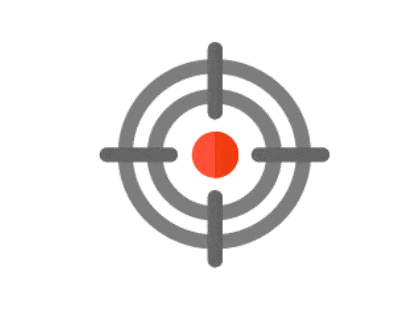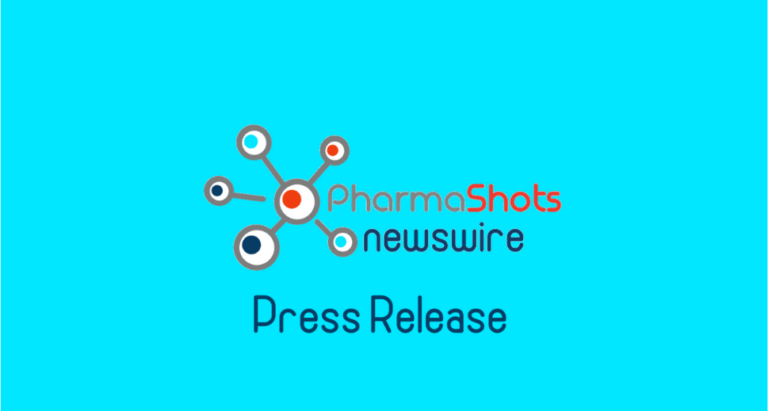Abbott's FreeStyle Libre 2 Now Approved for Adults and Children with Diabetes in Canada, Featuring Unsurpassed 14-Day Accuracy and Optional Alarms
 - FreeStyle Libre 2 system continuously measures glucose data every minute with customizable, optional real-time alarms1?to alert users when their glucose is high or low without scanning
- Now for children (ages 4 and older) and adults with diabetes, this latest technology sustains excellent performance for up to 14 days, providing trends, insights and actionable data on a reader or with the FreeStyle LibreLink mobile app ? all at the same price as the current FreeStyle Libre system
- Latest sensor-based glucose monitoring technology will be available in the coming months to the more than 3.7 million Canadians with diabetes2
ABBOTT PARK, Ill.,?Dec. 2, 2020?/PRNewswire/ --?Abbott (NYSE:ABT)?today announced its next-generation, sensor-based glucose monitoring technology, FreeStyle Libre 2, received approval by Health Canada for adults and children (4 and older) with diabetes. With new features such as optional, real-time alarms1?that measure glucose levels every minute, FreeStyle Libre 2 gives users the option to be alerted in real-time of critical events such as hypoglycemia (low glucose levels3)?or hyperglycemia (high glucose levels4). The wearable technology, which eliminates the need for painful fingersticks5, also provides people with diabetes with excellent accuracy and actionable information to better manage their condition, and will be priced at the same cost as the current FreeStyle Libre system.
"For the millions of Canadians with diabetes, Abbott's next-generation FreeStyle Libre 2 system expands on the life-changing capabilities of our original FreeStyle Libre system with enhanced accuracy, optional alarms and now available for children," said?Marie-Flore Nabor, general manager of Abbott's diabetes care business in?Canada. "This latest technology will transform the way diabetes is currently managed. The FreeStyle Libre 2 is designed to simplify this often complicated-to-manage condition and is accessible and affordable to people with diabetes in?Canada."
How FreeStyle Libre 2 Works
As the world leader in sensor-based glucose monitoring,6?Abbott continues to transform how people with diabetes test their glucose levels. Using Bluetooth technology, the FreeStyle Libre 2 system automatically alerts7?users when their glucose is high or low without needing to scan the sensor.
The FreeStyle Libre 2 sensor is worn on the back of the upper arm for up to 14 days and measures glucose every minute to help users and their healthcare providers make informed treatment decisions. With a one-second scan using FreeStyle LibreLink, a smartphone app,8?or handheld reader, users can see their glucose reading, trend arrow and eight-hour history. Users can also share data with their physicians or family members via the LibreLinkUp mobile app.
Abbott's?FreeStyle Libre 2 system utilizes the same proprietary wired enzyme technology as the FreeStyle Libre system, which was the first to remove painful fingersticks5?and is associated with better glucose control9, decreased time in hypoglycemia and hyperglycemia10, more time in optimal glucose range7, and improved HbA1C11.? A real-world study published in the?British Medical Journal?shows that the use of FreeStyle Libre system over one year is often associated with improved quality of life and that work absenteeism rate and diabetes-related hospital admissions decreased by two thirds.12
"Adding an alarm to this glucose sensing technology is definitely a major step to help people with diabetes live more confidently with less fear of high or low glucose levels," said Dr.?Bruce Perkins, M.D., Director, Leadership Sinai Centre for Diabetes and Clinician-Scientist,?University of Toronto. "We have seen from research with similar technologies that this kind of innovation can improve glucose level control, and even prevent emergency room visits and hospitalizations. For kids and adults alike, it means less pain from fingersticks, much greater insight into patterns, and much more reassurance."
Abbott's?FreeStyle Libre 2 system will be available for people with diabetes ages 4 and up in?Canada?in the coming months.
As the #1 sensor-based glucose monitoring system used worldwide,6?Abbott's FreeStyle Libre portfolio has changed the lives of more than 2.5 million people across more than 50 countries.??Abbott has also secured partial or full reimbursement for the FreeStyle Libre system in 37 countries, including?Canada?where residents of?Ontario?and?Quebec13?who manage diabetes with insulin are covered. Other countries include?France,?Germany,?Japan, the?United Kingdom, and the U.S.
About Abbott
- FreeStyle Libre 2 system continuously measures glucose data every minute with customizable, optional real-time alarms1?to alert users when their glucose is high or low without scanning
- Now for children (ages 4 and older) and adults with diabetes, this latest technology sustains excellent performance for up to 14 days, providing trends, insights and actionable data on a reader or with the FreeStyle LibreLink mobile app ? all at the same price as the current FreeStyle Libre system
- Latest sensor-based glucose monitoring technology will be available in the coming months to the more than 3.7 million Canadians with diabetes2
ABBOTT PARK, Ill.,?Dec. 2, 2020?/PRNewswire/ --?Abbott (NYSE:ABT)?today announced its next-generation, sensor-based glucose monitoring technology, FreeStyle Libre 2, received approval by Health Canada for adults and children (4 and older) with diabetes. With new features such as optional, real-time alarms1?that measure glucose levels every minute, FreeStyle Libre 2 gives users the option to be alerted in real-time of critical events such as hypoglycemia (low glucose levels3)?or hyperglycemia (high glucose levels4). The wearable technology, which eliminates the need for painful fingersticks5, also provides people with diabetes with excellent accuracy and actionable information to better manage their condition, and will be priced at the same cost as the current FreeStyle Libre system.
"For the millions of Canadians with diabetes, Abbott's next-generation FreeStyle Libre 2 system expands on the life-changing capabilities of our original FreeStyle Libre system with enhanced accuracy, optional alarms and now available for children," said?Marie-Flore Nabor, general manager of Abbott's diabetes care business in?Canada. "This latest technology will transform the way diabetes is currently managed. The FreeStyle Libre 2 is designed to simplify this often complicated-to-manage condition and is accessible and affordable to people with diabetes in?Canada."
How FreeStyle Libre 2 Works
As the world leader in sensor-based glucose monitoring,6?Abbott continues to transform how people with diabetes test their glucose levels. Using Bluetooth technology, the FreeStyle Libre 2 system automatically alerts7?users when their glucose is high or low without needing to scan the sensor.
The FreeStyle Libre 2 sensor is worn on the back of the upper arm for up to 14 days and measures glucose every minute to help users and their healthcare providers make informed treatment decisions. With a one-second scan using FreeStyle LibreLink, a smartphone app,8?or handheld reader, users can see their glucose reading, trend arrow and eight-hour history. Users can also share data with their physicians or family members via the LibreLinkUp mobile app.
Abbott's?FreeStyle Libre 2 system utilizes the same proprietary wired enzyme technology as the FreeStyle Libre system, which was the first to remove painful fingersticks5?and is associated with better glucose control9, decreased time in hypoglycemia and hyperglycemia10, more time in optimal glucose range7, and improved HbA1C11.? A real-world study published in the?British Medical Journal?shows that the use of FreeStyle Libre system over one year is often associated with improved quality of life and that work absenteeism rate and diabetes-related hospital admissions decreased by two thirds.12
"Adding an alarm to this glucose sensing technology is definitely a major step to help people with diabetes live more confidently with less fear of high or low glucose levels," said Dr.?Bruce Perkins, M.D., Director, Leadership Sinai Centre for Diabetes and Clinician-Scientist,?University of Toronto. "We have seen from research with similar technologies that this kind of innovation can improve glucose level control, and even prevent emergency room visits and hospitalizations. For kids and adults alike, it means less pain from fingersticks, much greater insight into patterns, and much more reassurance."
Abbott's?FreeStyle Libre 2 system will be available for people with diabetes ages 4 and up in?Canada?in the coming months.
As the #1 sensor-based glucose monitoring system used worldwide,6?Abbott's FreeStyle Libre portfolio has changed the lives of more than 2.5 million people across more than 50 countries.??Abbott has also secured partial or full reimbursement for the FreeStyle Libre system in 37 countries, including?Canada?where residents of?Ontario?and?Quebec13?who manage diabetes with insulin are covered. Other countries include?France,?Germany,?Japan, the?United Kingdom, and the U.S.
About AbbottAbbott is a global healthcare leader that helps people live more fully at all stages of life. Our portfolio of life-changing technologies spans the spectrum of healthcare, with leading businesses and products in diagnostics, medical devices, nutritionals and branded generic medicines. Our 107,000 colleagues serve people in more than 160 countries. Connect with us at?www.abbott.com, on LinkedIn at?www.linkedin.com/company/abbott-/, on Facebook at?www.facebook.com/Abbott?and on Twitter?@AbbottNews. 1?Notifications will only be received when alarms are turned on and the sensor is within 20 feet of the reading device. 2?Diabetes Canada.?https://diabetes.ca/DiabetesCanadaWebsite/media/Advocacy-and-Policy/Backgrounder/2020_Backgrounder_Canada_English_FINAL.pdf. accessed?November 24, 2020. 3?FreeStyle Libre 2 User Manual. Based on low glucose alarms set at 70 mg/dl. 4?FreeStyle Libre 2 User Manual. Based on high glucose alarms set at 180 mg/dl. 5?A finger prick test using a blood glucose meter is required during times of rapidly changing glucose levels when interstitial fluid glucose levels may not accurately reflect blood glucose levels, or if hypoglycemia or impending hypoglycemia is reported by the system, or when symptoms do not match the system readings. 6?Data on file, Abbott Diabetes Care. Data based on the number of users worldwide for the FreeStyle Libre portfolio compared to the number of users for other leading personal use, sensor-based glucose monitoring systems. 7?The FreeStyle Libre 2 system has optional glucose alarms. Alarms need to be turned on in order to receive low and high glucose alarms. 8?The FreeStyle LibreLink app is only compatible with certain mobile devices and operating systems. Please check the website for more information about device compatibility before using the app. Use of FreeStyle LibreLink requires registration with LibreView. 9?Dunn, T., et al. Real-world flash glucose monitoring patterns and associations between self-monitoring frequency and glycaemic measures: A European analysis of over 60 million glucose tests. Diabetes Research and Clinical Practice; 137(2018) 37-46 10?Ajjan R. Insights from real world use of flash continuous glucose monitoring. Symposium conducted at: American Diabetes Association 78th Scientific Sessions;?June 2018;?Orlando, FL 11?Seibold A, Ells S, Schlaeger C, Welsh Z. A meta-analysis of real-world observational studies on the impact of flash glucose monitoring on glycemic control as measured by HbA1c. Poster presented at: 78th Scientific Sessions;?June 2018;?Orlando, FL. 12?Fokkert?M,?van Dijk?P,?Edens?M, et al, Improved well-being and decreased disease burden after 1-year use of flash glucose monitoring (FLARE-NL4), BMJ Open Diabetes Research and Care?2019;7:e000809.?doi:?10.1136/bmjdrc-2019-000809 13?The following three criteria must be met: intensive insulin therapy, frequent or severe hypoglycemia problems and the necessity of glycemia self-monitoring a minimum of eight times per day. SOURCE Abbott






